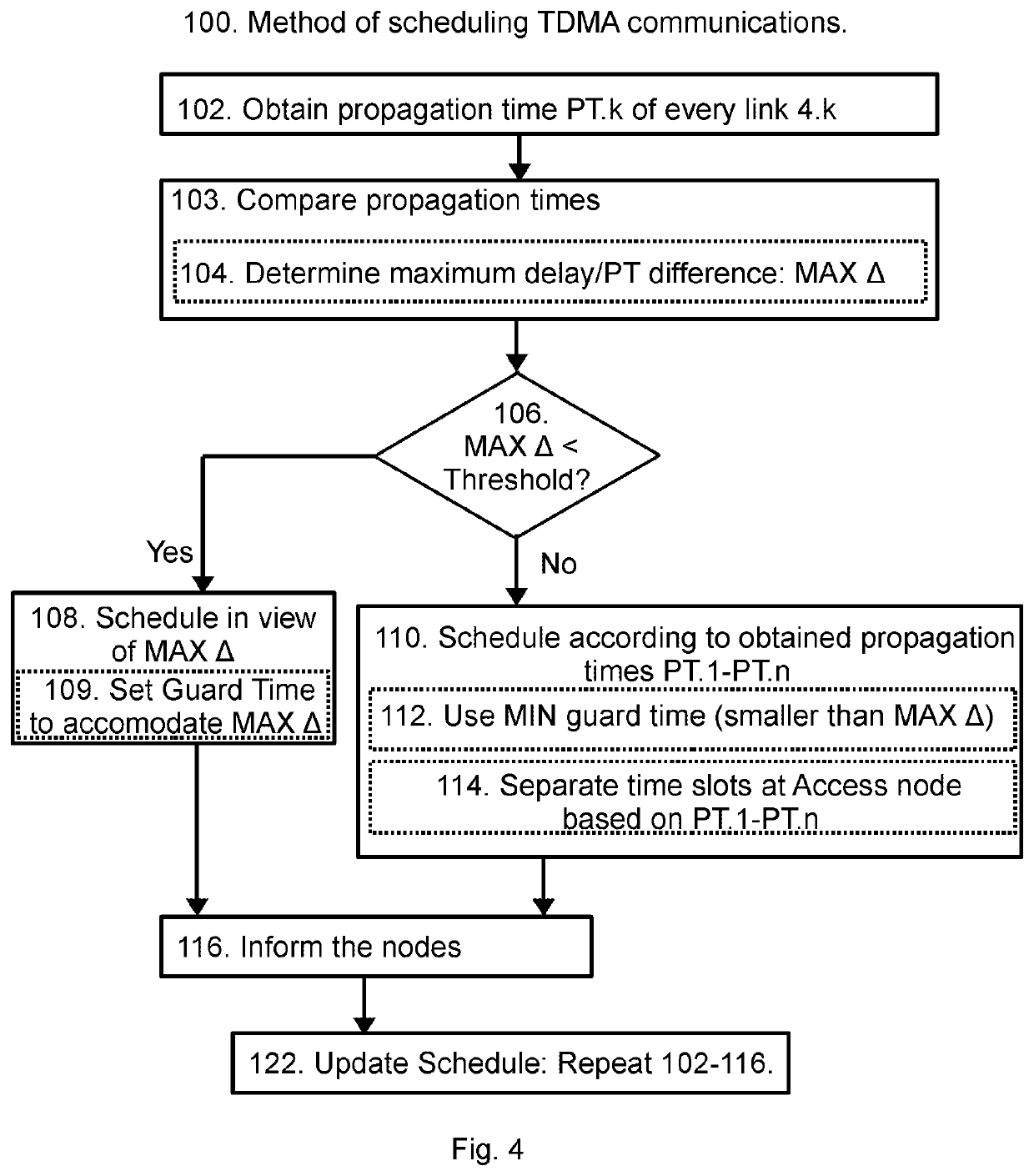Method and system of wireless TDMA scheduling for industrial machine-to-machine communication, including propagation-delay-aware scheduling
a technology of industrial machine-to-machine communication and wireless tdma scheduling, applied in the field of industrial communication, can solve the problems of low cost efficiency, negative affecting the communication latency between the nodes, and inability to avoid collisions, etc., and achieve the effect of low latency and high reliability
- Summary
- Abstract
- Description
- Claims
- Application Information
AI Technical Summary
Benefits of technology
Problems solved by technology
Method used
Image
Examples
Embodiment Construction
[0041]FIG. 1 illustrates a wireless communication network 1 having a star configuration where a first node, or access node 2, communicates with a number of slave nodes, second nodes, or control nodes 3. The access node 2 is typically communicatively connected to an overall control system, in order also to provide access between the overall control system and the slave nodes 3, however such overall control system is not illustrated in FIG. 1. Each control node 3 is typically connected to, or comprising, an actuator or a sensor of an underlying industrial automation process, however such industrial process is not illustrated in FIG. 1. A network controller 5, is configured for scheduling the communication between the control nodes 3 and the access node 2. In the embodiment of FIG. 1, the network controller 5 is comprised in the access node 2, however, the network controller 5 can alternatively be a separate unit. To distinguish between the slave nodes 3, these are numbered 3.1, 3.2, 3...
PUM
 Login to View More
Login to View More Abstract
Description
Claims
Application Information
 Login to View More
Login to View More - R&D
- Intellectual Property
- Life Sciences
- Materials
- Tech Scout
- Unparalleled Data Quality
- Higher Quality Content
- 60% Fewer Hallucinations
Browse by: Latest US Patents, China's latest patents, Technical Efficacy Thesaurus, Application Domain, Technology Topic, Popular Technical Reports.
© 2025 PatSnap. All rights reserved.Legal|Privacy policy|Modern Slavery Act Transparency Statement|Sitemap|About US| Contact US: help@patsnap.com



